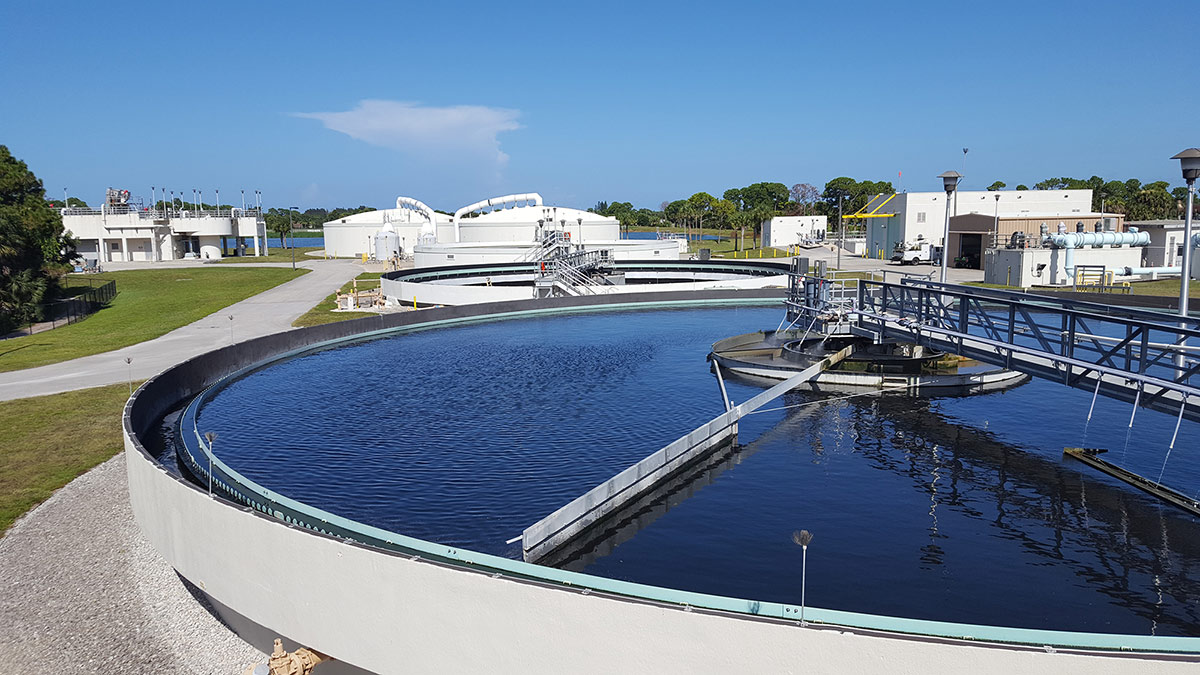Strategic Approaches to Boost Drainage Therapy Efficiency and Minimize Ecological Impact
In the world of waste water therapy, the quest for improved effectiveness and lowered ecological effect is a continuous challenge that requires strategic remedies. The combination of advanced treatment innovations, energy-efficient processes, resource healing strategies, improved nutrient removal methods, and smart surveillance and control systems represents a complex framework for dealing with these pushing problems.
Advanced Therapy Technologies
Sophisticated membrane layer filtration systems have actually transformed sophisticated wastewater treatment procedures, dramatically improving the elimination of impurities. These innovative systems work by forcing water through a semi-permeable membrane layer, efficiently separating contaminations from the water stream. The membrane's tiny pores trap contaminants such as bacteria, infections, and put on hold solids, enabling just purified water to travel through. This technology has proven to be highly efficient in removing a wide variety of impurities, including pharmaceuticals, heavy steels, and organic compounds, which are commonly testing to remove through traditional therapy methods.
Moreover, membrane layer filtering systems use countless benefits over standard treatment strategies. They need less space, generate higher-quality effluent, and are more immune to changes in influent water top quality. Additionally, these systems are highly versatile and can be quickly integrated into existing treatment plants or utilized as standalone devices for decentralized applications. As the demand for tidy water continues to rise, the adoption of advanced membrane layer purification technologies is important to make sure effective and sustainable wastewater therapy methods.
Energy-Efficient Procedures
The assimilation of energy-efficient procedures in wastewater therapy systems is essential for enhancing resource usage and lowering operational prices. By applying energy-efficient technologies, treatment plants can considerably lower their carbon impact and general ecological effect. One crucial strategy to improving power effectiveness in wastewater therapy is the usage of sophisticated aeration systems, such as fine bubble diffusers or surface area aerators, which can enhance oxygen transfer performance and decrease energy usage. In addition, incorporating power healing systems, like anaerobic digestion for biogas production or making use of excess heat for thermal procedures, can aid offset energy demands and promote sustainability.
Moreover, maximizing process control and automation with the usage of advanced sensors and checking systems can enhance total power performance by adjusting procedures in real-time based upon real need and problems. Implementing energy audits and consistently monitoring energy performance indicators are important methods to recognize areas for improvement and track energy-saving efforts properly. In general, the adoption of energy-efficient processes in wastewater therapy not only benefits the setting however also contributes to long-term price financial savings and operational sustainability.
Source Healing Strategies
With a concentrate on enhancing source usage and sustainability in wastewater treatment systems, the execution of source healing techniques becomes a pivotal aspect in enhancing operational efficiency. Source healing techniques in wastewater treatment involve the recognition and extraction of beneficial resources from the waste stream, thus turning what was once taken into consideration waste right into a beneficial possession. By implementing resource recovery techniques such as nutrient elimination and healing, power generation from raw material, and the production of reusable water, wastewater therapy plants can lessen environmental impact while maximizing efficiency.

Boosted Nutrient Removal Methods
Carrying out innovative nutrient elimination techniques is necessary for optimizing the efficiency of wastewater treatment systems. Enhanced nutrient elimination plays a vital duty in minimizing the environmental impact of cured effluent released right into water bodies. Among the key techniques utilized for enhanced nutrient removal is the procedure of biological nutrient removal (BNR), which includes the elimination of nitrogen and phosphorus through organic procedures. This can be achieved with using specialized microorganisms that can transform nitrogen substances into inert nitrogen gas through denitrification, and collect phosphorus within their cells with a procedure called enhanced organic phosphorus elimination (EBPR)

In enhancement to BNR, advanced therapy methods such as membrane bioreactors (MBRs) and constructed marshes can likewise be used to boost nutrient elimination effectiveness. By incorporating these innovative nutrient removal strategies into wastewater treatment industries, systems and municipalities can effectively lower nutrient contamination and protect the atmosphere.
Smart Tracking and Control Solution
Making use of sophisticated innovation, the combination of smart tracking and control systems revolutionizes the functional efficiency of wastewater therapy centers. These systems incorporate sophisticated sensors and data analytics to continually monitor essential specifications such as pH degrees, turbidity, dissolved pop over to this web-site oxygen, and circulation rates in real-time. By gathering and assessing this data, drivers can get click now important insights into the performance of the treatment processes, enabling positive adjustments to optimize therapy efficiency.
Smart monitoring and control systems additionally sustain remote tracking capacities, enabling drivers to accessibility real-time information and control features from off-site areas. This remote access improves functional versatility and responsiveness, allowing quick interventions in situation of system malfunctions or changes in influent top quality. The predictive upkeep capabilities of these systems assist avoid devices failings and minimize downtime, eventually improving the general integrity of wastewater treatment operations.
Verdict
In verdict, calculated approaches such as sophisticated therapy modern technologies, energy-efficient procedures, source recovery methods, improved nutrient elimination methods, and wise monitoring and control systems play a crucial duty in improving wastewater treatment effectiveness and lessening ecological effect. By carrying out these techniques, wastewater treatment plants can improve their overall efficiency, lower power intake, recuperate valuable sources, and make sure conformity with ecological laws. These approaches are crucial for reliable and lasting wastewater management methods.

In final thought, tactical methods such as advanced therapy more modern technologies, energy-efficient procedures, resource healing methods, enhanced nutrient removal techniques, and clever surveillance and control systems play a critical function in boosting wastewater treatment efficiency and decreasing environmental impact.
Comments on “Enhanced Waste Water Treatment Solutions for Lasting Water Monitoring”